Fall is hitting softly in Montana. The leaves on the cottonwoods, aspen, and mountain ash are still for the most part green, though there are hints… little bits of yellow slowly emerging, pushing the green towards fading colors, fading summer smells. Cold mornings. Dew on the pine needles. And the single maple across the street is turning bright red already with a dash of leaves sitting fallen around the narrow trunk.
Up higher in the mountains the hints are more obvious. The low shrubs that scatter the Rattlesnake are beginning to fully turn in color. But even up high there is a stubborn mentality of holding on to summer among the larch. They are still resolutely, if not defiantly green. But for all the hold outs, there is one that that can not help but give the season away… The sun’s angle is quickly dropping and moving to the south, as if it is running from something. Morning starts later. The sun comes up further down the southern ridge of the mountain Jumbo across the valley, and evenings are falling dark suddenly much earlier. And during the day, the light in general just seems more golden, the result of a lower angle of everything to the south. Fall is here even if the plants are holding on to summer.
Which I get. I’m sort of holding on too. In a place where winter goes so extremely into gray, I tend to be in denial when summer ends, so good is the drunkeness of sunshine.
It is Tuesday. Around noon I pack up the truck, stop by Black Coffee to grab a bag of coffee for the road. Parked out front for a few minutes with the window open Acre first barks to let me know he hates being abandoned in the car, then jumps out and runs inside to greet each and every single person in the shop, first in the retail area up font and then to the back where production is going on. I finally am able to catch him, scoop him up and grab my coffee for the road. We stop by a sandwich shop and grab something for dinner and throw it in the cooler. And then the two of us alone hit the road for the Yaak.
It is a beautiful day for a drive. Single lane highways the whole way. Between mountains I catch up on calls, first with my friend Forrest until I lose him around Arlee, then my daughter, but I lose her call around Dixon, then my parents but lose them around Thompson Falls. Cell service cuts in and out in these parts. Mountains still determine the landscape.
We crest a hill, somewhere around TFalls is a fire blowing up in the distance, probably somewhere in Idaho. A late season fire column rising tall and fast. It makes for a pretty view from this distance. And with these cold nights and low temperature days, its hopes of going far are not good. Windows down, Acre’s nose out the window, we move through the sequence of towns. Thompson Falls, Trout Creek, Noxon… onward. No music, no more phone calls, just a simple silence of sun infused wind as Acre’s hair blows around the car and my mind has a chance to be still.
The Clark Fork slows and widens in this area as the mountains push back just a little from the highway and seem to hold themselves deeper into the earth. I love this drive. Then the trees rise higher around the road. Through Troy, with its old town signs from fifty years ago, still kept up and in working order. Up into the no man’s land, the Cabinets, and intriguing mountain range I’ve never really explored beyond the surface. This has to be one of the quietest forests around. The highway turns north eventually, now towards the Yaak. Traffic drops off precipitously. A few white USFS trucks (I miss the USFS green). A band of motorcycles; did their vests say Banditos? (What a bunch of closet tree huggers! I knew it!) And a few old Oldsmobiles… (Do these last longer than Toyotas?!) Further north. The trees keep getting taller and with fewer interruptions cut into them from homes. And no businesses. This is a quiet land where the Pacific Northwest pushes a small finger into Montana. Such dense forests.
I’m up here to see the Black Ram, a proposed USFS cut that would like to harvest around 95K acres of forest. Old forest. I’ve been part of a thing called The Montana Project with Rick Bass, an old friend Matt Holloway, and a few others with the goal of helping keep some of the key things that make Montana distinctly Montana in tact. This old forest we’ve targeted as one of those things. It is an “ancient forest” as Rick says. And I get it. There is not much true old forest growth up here, and what remains really does constitute something ancient. I’m not pretending there aren’t trees… there are miles and miles of trees. But if you get a birds eye view of this region you quickly and clearly can see that the old forests, what remain of them, are broken apart by areas that have been completely cut. This creates a patchwork of new and old forest lands. And within this patchwork the bare spots do grow in again, slowly and will eventually burn, regrow again, further mix, develop and so on, but there is a difference between new forests and old forests. This patchwork does grow back, slowly, and will eventually burn, regrow again, further mix species, develop, and so on, but the intact forest ecosystem, diverse with integral species from mosses, fungi, shrubs, trees, and animals takes a very, very long time to return to this level of species diversity and integration. These old stands are not easily replicated. These old stand of forests have been allowed to grow, develop, burn, keep growing, for thousands of years. When fires move through them they are not 100% destructive. While much of NW Montana has been logged, there still remains a few small pockets of the old tree stands left. These stands are so clearly distinguished from the new stands, by diversity of age of trees within them and by diversity of overall life within them. I love mountains. I love forests. And I love even many young forests that are common through our state. But these old sections… they possess something on another level, perhaps beyond description, though description is exactly what I am pursing here.
I haven’t spent a ton of time up here, though we did bring the kids here when they were little and slept among some very old cedars and listened to wolves and saw a few big bears. Working on this project, and knowing winter is coming, I just want to go walk in these woods for a few days. I don’t know exactly why, I just know I need to. I want to justify it as something I am doing to try to protect these areas, but in reality I know it is something I simply want for myself too. I just need to see it, breath it, sit in in it for a few moments, before winter hits.
Forests around the country are as different as forests around the world. Some forests have heavy human influence and input, while others do not. Some are relatively young, some are tremendously old. But the old ones have become, no matter where on earth, exceedingly rare.
Forests young and old have value beyond economics. And for me I love exploring them regardless of age. We have loads of young forest in Montana, areas that have been cleared, and regrown, burned, all within the life of my parents and myself. But previously clear cut forests tend to have far less species diversity, far less age diversity, and far less resiliency to flood and fire.
Old forest stands are different and you can feel it when you walk through them. Old and young tree alike stand and scatter the dense canopy. In ones like this that haven’t seen catastrophic fires in centuries, you see towering old trees standing tall over the canopy like a sky scraper. Down beneath you see small seedlings erupting from mosses. You see fallen, rotting logs slowly decaying into new life.
I get to the gate where the road ends at a large clearing, cross the creek, and walk in. To my surprise there is a huge swath clearing amidst this dense forest. This swath was created by the USFS a few years ago as a “fire break” for the small town of Yaak that lies over the mountain to my east in the next valley over. The swath, a 100 feet wide, goes for miles to the north to the Canadian border, and offers a glaring comparison of old growth forest and a clear cut. I’m a little cynical about the idea of this being a “fire break” and not an excuse to punch a road into old growth, because, as anyone who has been around large fires knows, crown fires do not require direct contact to continue moving through forests. A crown fire very frequently throws lit balls of fire in the form of embers up and into the forest miles ahead of the pyrocumulus that forms. But the swath is cut, and makes an interesting juxtaposition with this ancient forest, and in some regards makes my walk easy and pleasant. I walk back and forth across it.
The sun is getting lower as I walk but the first obvious distinction between the cut and the forest is the temperature. The clear cut is 8-10 degrees warmer and drier than the canopied forest. It’s not hard to tell the difference. In the sun I have a t-shirt on. As soon as I enter the forest I pull on my coat again. The moisture level is clearly different too. In the clear cut the ground is brittle and crunchy under foot. The grasses, none of which exist under the canopy, are long and brittle and dry. Under the canopy a whole different set of species of shrubs and mosses cover the ground. None of the dry land grasses grow under this canopy. While I don’t have a way measuring moisture differences, it is obvious. Wildly obvious.
The edges of the forest along the clearcut show how how quickly a canopied forest change when exposed to clearing. Once lush trees are standing half alive where their limbs continue into the dense and lush forest, and half dead where their limbs overhang the dry clearing. The ground in the clearcut is brown, dry and dead except for fire weed, non of which exists inside the forest canopy.
As I walk into the darkness of the forest canopy my steps become quieter over the low soft moss. There are mushrooms. Lichen. Everything even this late in the dry season still has a lush feel. I stop on the edge. In this small corner of the woods I am on the edge of two different worlds. One, to my left, an old, grown over world layers upon layers of life. The other, a cleared meadow, beautiful, but out of place. The few remaining towering giants that stand in the cleared meadow look naked standing out on their own.
You can see the fire marks around their lower trunks where they stood up to forest fires that have swept through over the ages. Their bark allowed them resistance, allowed them to remain. But now, around those same burn marks is the sign of heavy erosion, a new phenomenon that happened only after this clearing was put in. Erosion has not affected them for hundreds of years, until now, slowly lowering the dirt around their bases.
For these giants, erosion and/or wind will be the likely death of them now that they live in a clearcut. They will luckily spread their seeds before that demise, but were this forest to remain in tact, who knows how many more hundreds of years they might remain. Some of the trees in this forest stood when the Mongol Empire existed. In all of those hundreds of years in between erosion did not kill them. Fire did not kill them. Drought did not kill them. Floods did not kill them. They are incredibly resilient to all the whims of the world as history turns, resilient to almost everything but a total clearing… They have made it through centuries, until now. I see no good reason to cut into these last remaining ancient stands.
I sit down on a fallen log inside the canopy, looking around to take it all in, this beautiful dense forest. I take a sip of water and watch Acre jumping up and over a log. A squirrel chatters at me from above. Some ravens are calling high above the canopy. It’s cold in here. I put on another layer and take off my sunglasses.
I’m not anti logging. I get that we use timber. I get that our society needs timber. Building with wood is part of our lives. But at this point, right now, these ancient stands are an extreme minority of the forests we have. Even some previously logged areas have filled in after they were cut a century ago, and filled in with now big trees. But they are not stands like this. Their hundred year old trees are babies compared to these. The diversity of species in those areas is still young and developing compared to these areas. These ancient forests are a true legacy. A heritage forest. There is no good reason to cut these last remaining ancient stands. They will not save or destroy the timber industry. The problems in the timber industry have far more to do with international trade than they do access to the last remaining old growth in American forests. And while some people fight logging in every single place, that is not what I’m advocating for. I’m advocating for protecting these last ancient stands.
I step out into the clearing and continue walking north. I suffer from a problem of always wanting to see what is around the next corner, a problem I’ve had for as long as I can remember, even back in Brown County in Indiana growing up… I’m a curious person in this regard. Back in the clearing, even as the sun is dropping, the temperature is warmer and I shed a layer walking into the dark. Finally as the shadows overtake the light, darkness begins to fall and I notice Acre walking more closely by my side, perhaps because he is ready for his dinner, perhaps because the darkness creates an instinctive feel of wanting to remain closer to the animals you know. We’ve come across bear and coyote droppings. As it gets dark I decide to start walking the miles back to camp.
The light fades. There is no moon right now. I forgot my light. My brain lights up with the sounds from the shadows. Each step a step into the darkness. I find a certain exhilaration in this sort of forest density. Suddenly this swath feels tiny, and I have a sense for just how remote this forest is, and how wild it is with animals I can not see, but know are there.
In the dark I arrive back at my truck where we’ll camp for the night, beside the creek that pours invisibly out of the darkness and vanishes again, into the dense woods.
I feed Acre first, then build a small fire in a circle of rocks. As I strike the match to light the fire a sudden sound fills the forest canopy, and I see Acre pause and look up. Wolves. Not terribly far from here. I love this sound. Acre is unsure what he thinks but I assure him it’s ok. We keep listening.
The forest is so quiet in the dark. There is no wind tonight. The fire makes a quiet crackling noise. The stream a gentle whisper. I drink a beer sitting by the fire’s flicking shadows and think about the fact that as much as I like camping alone, a pastime I used to do regularly, I’ve become accustomed to having Ella and the kids with me and would love for them to be here, under this canopy of old trees with cracks in the cathedral ceiling that let the stars peak through. What a thing to get to witness. What a thing to exist.
It is a dark night. Acre eventually climbs into a chair I set up for him beside mine and I throw a blanket over him. Later I lay on the ground beside the fire looking up. Listening. Watching. This is one of the wildest places in North America, and while it will certainly survive if the forest service has it’s way and allows them to cut into these old lands, I am so hopeful we can help keep these last remaining ancient forest in tact so they don’t have to start over again. A thousand years is perhaps not much in geologic time or for a forest but it is a long time for the rest of us. There is simply nothing else quite like them. These are the things in life worth protecting.




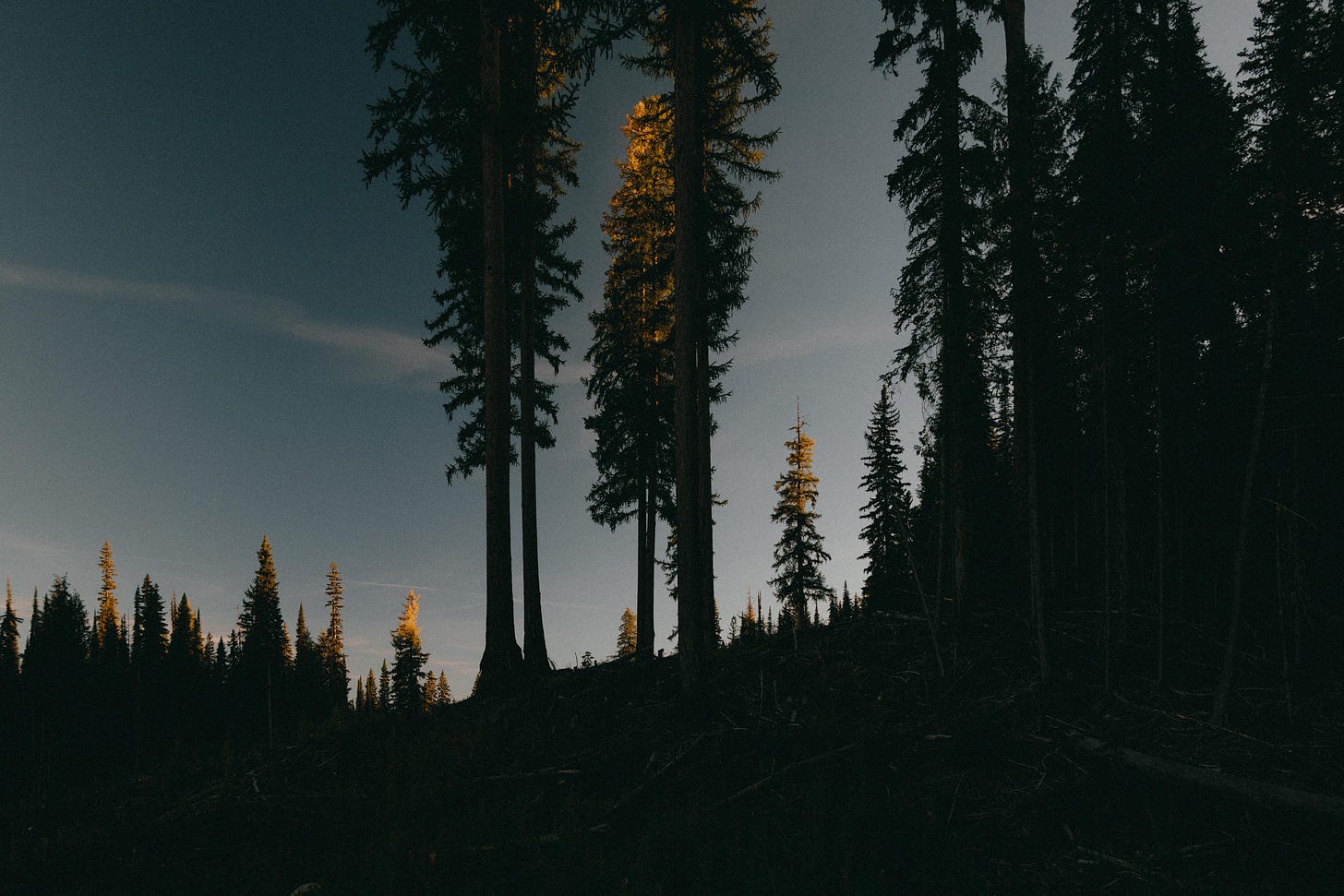
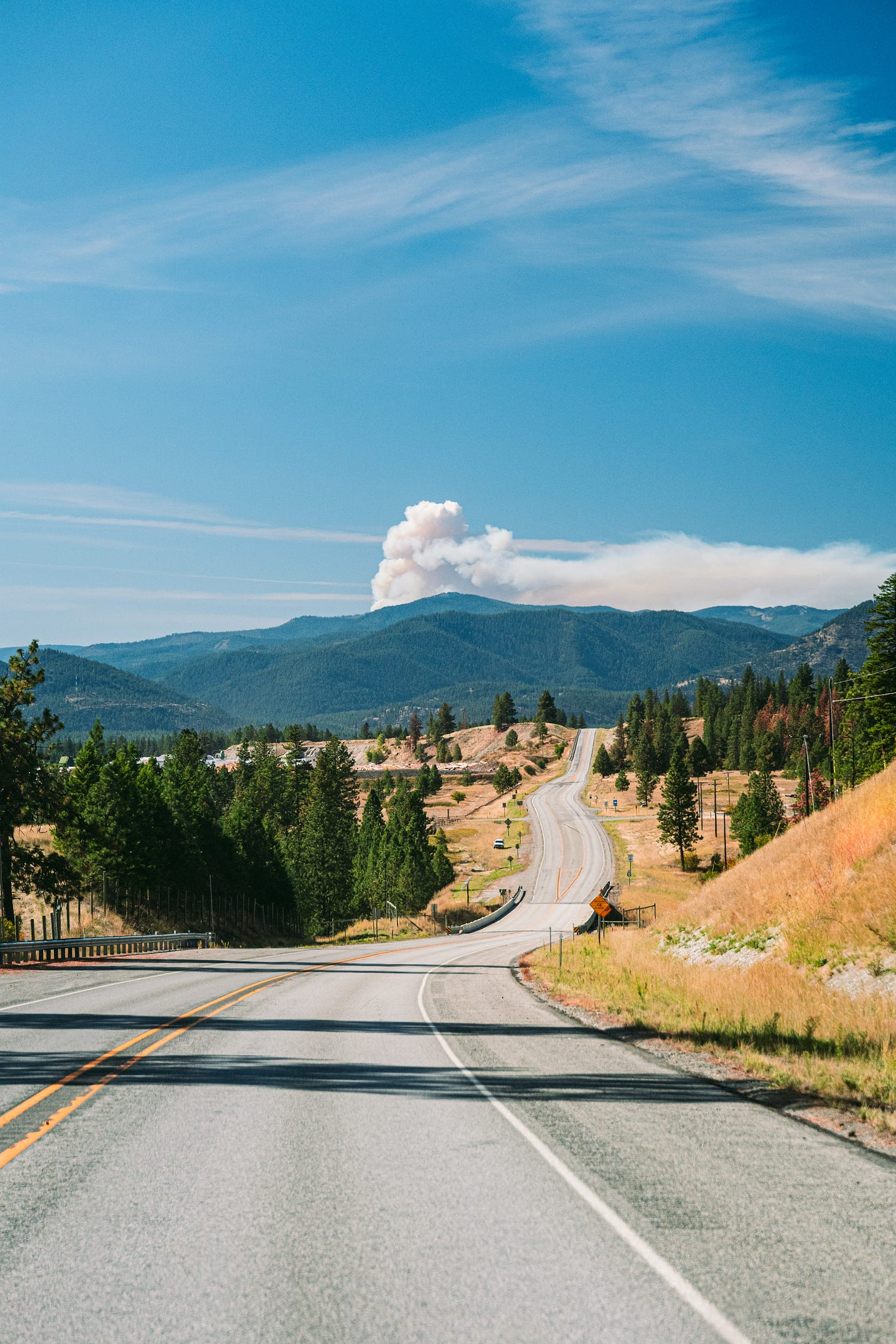
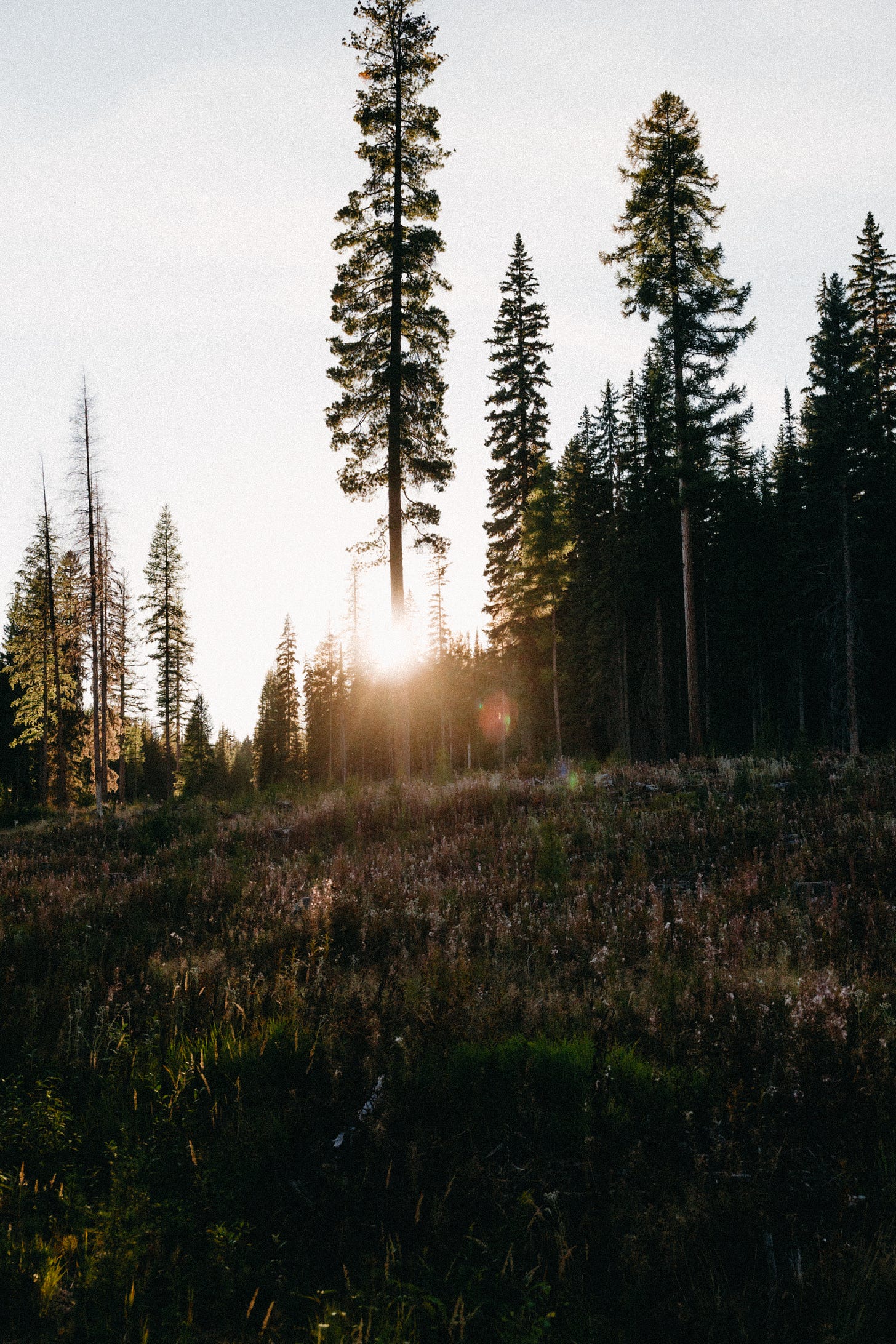
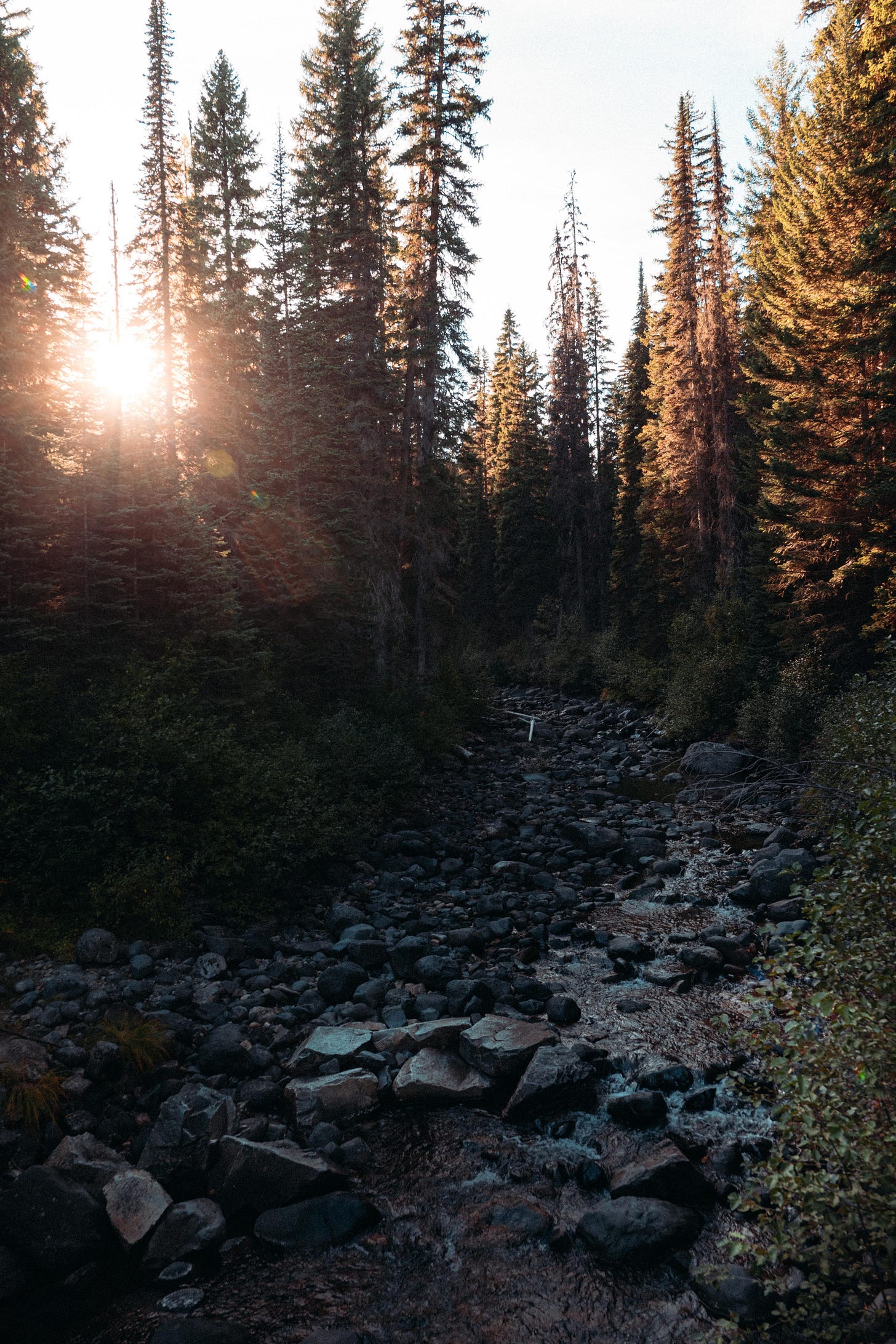
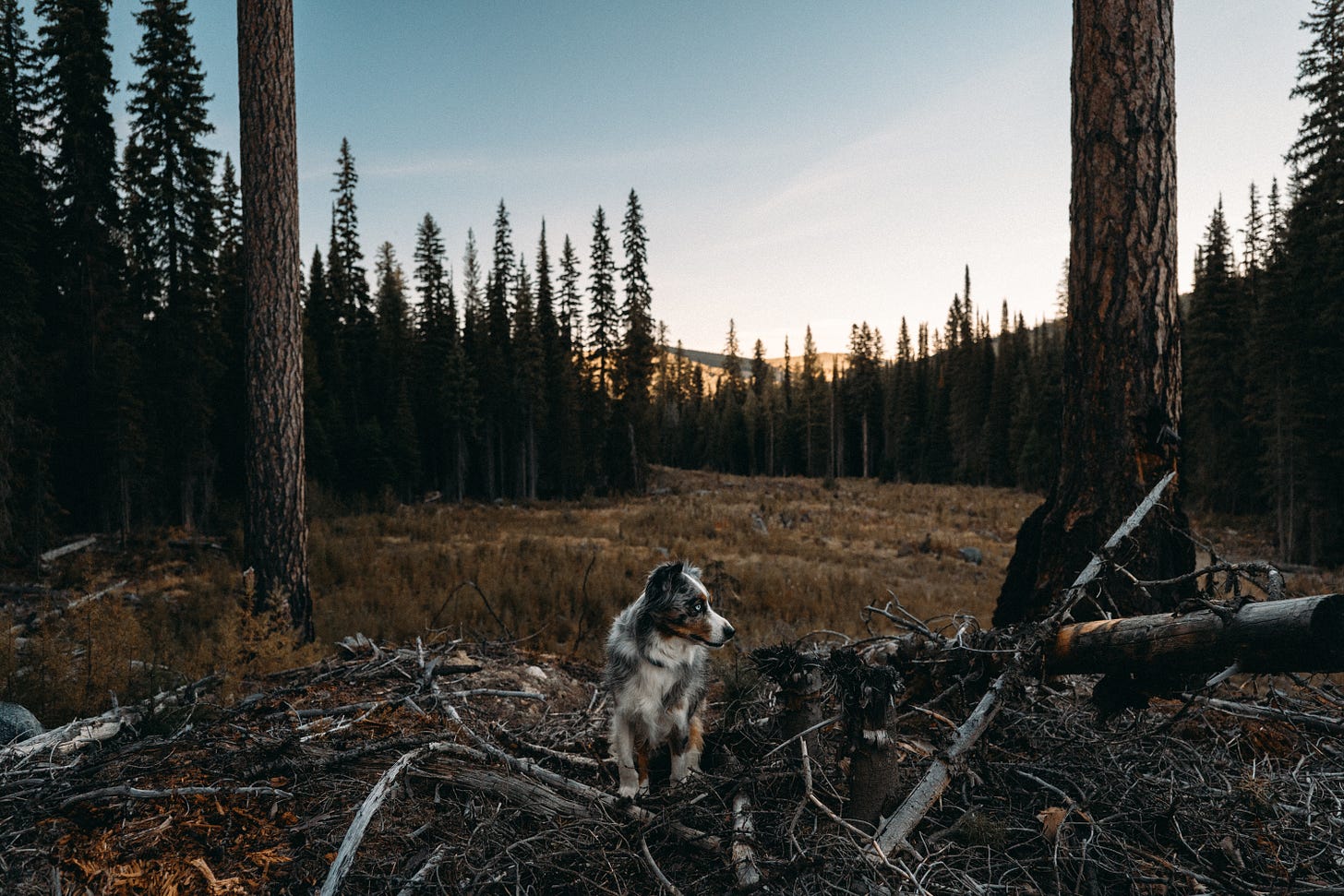



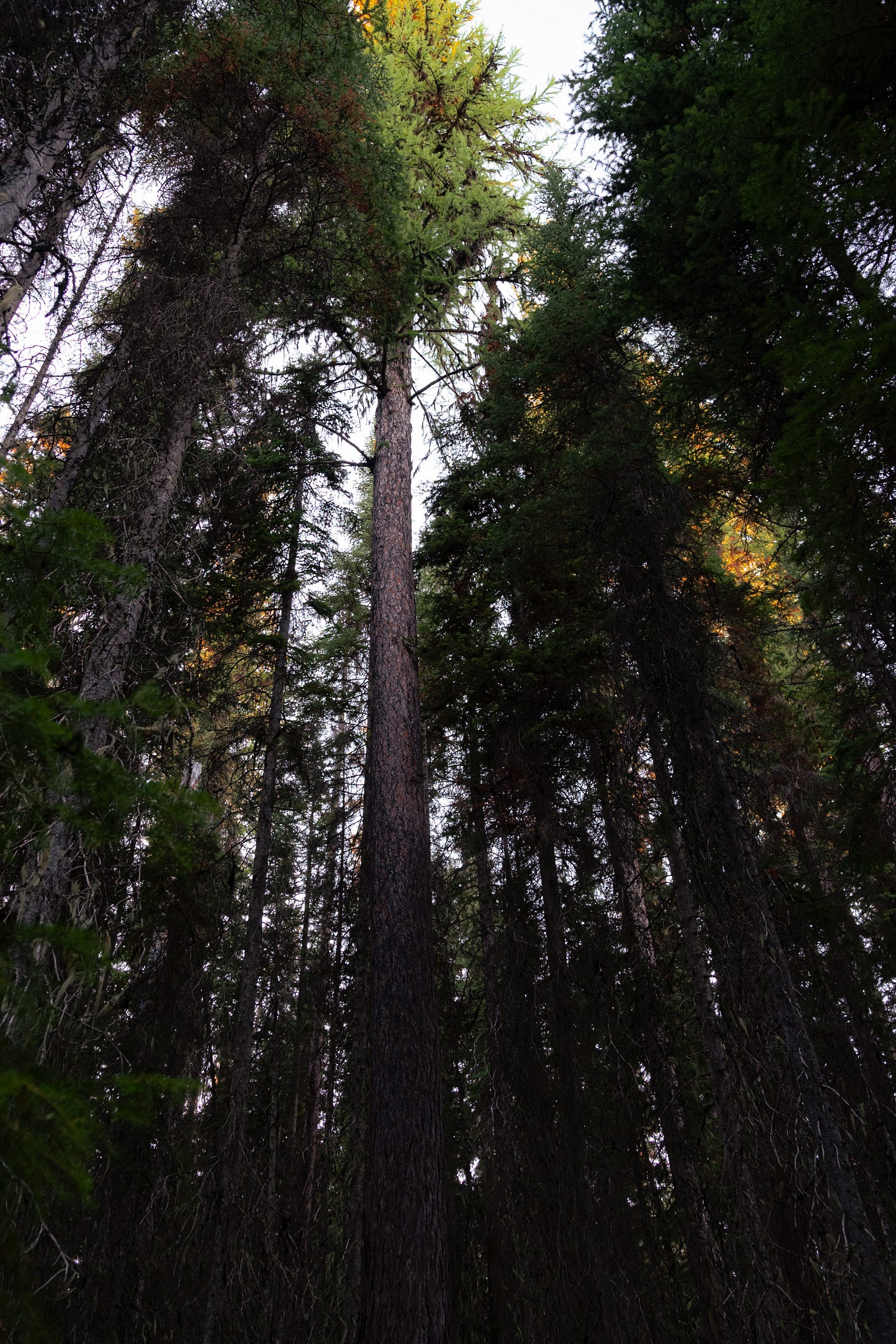

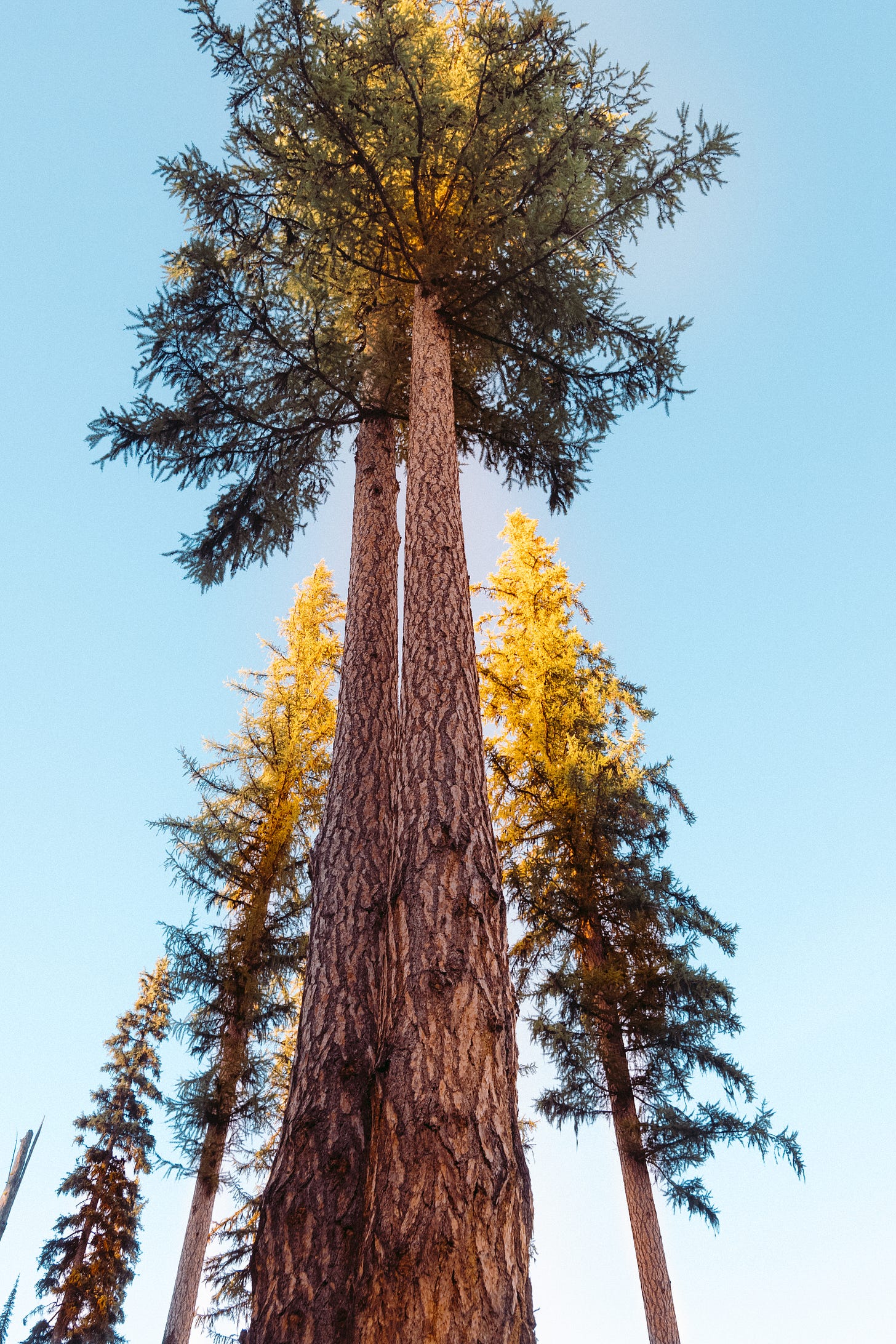
I suspected you were in my part of the world. I think things are being decided in favor of those trees. Lots of effort went into the effort to preserve them. Fingers crossed it works.
Good to read about the different feelings of old growth and new growth forests and stands. Are the biggest oldest trees in ‘your’ woods mostly fir? Occasionally a larch? I love this time of year. Thanks for writing it.